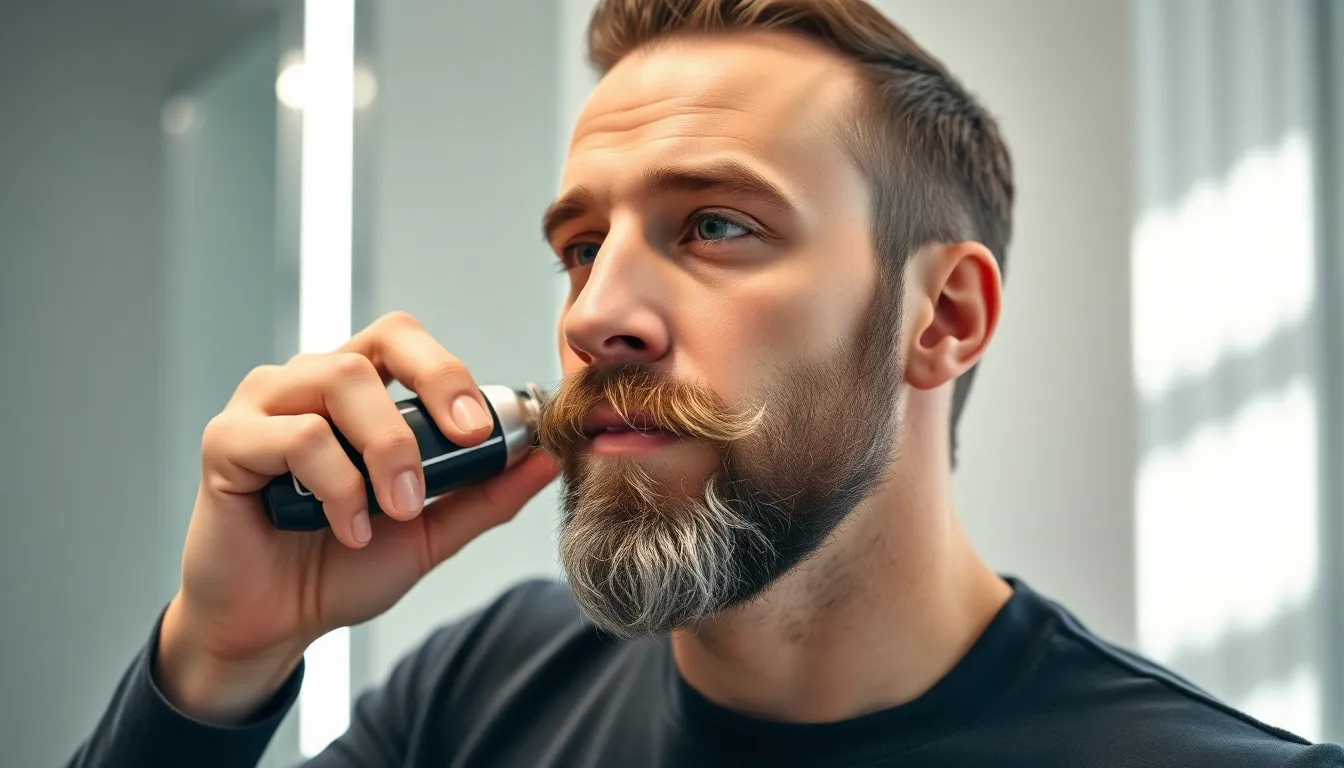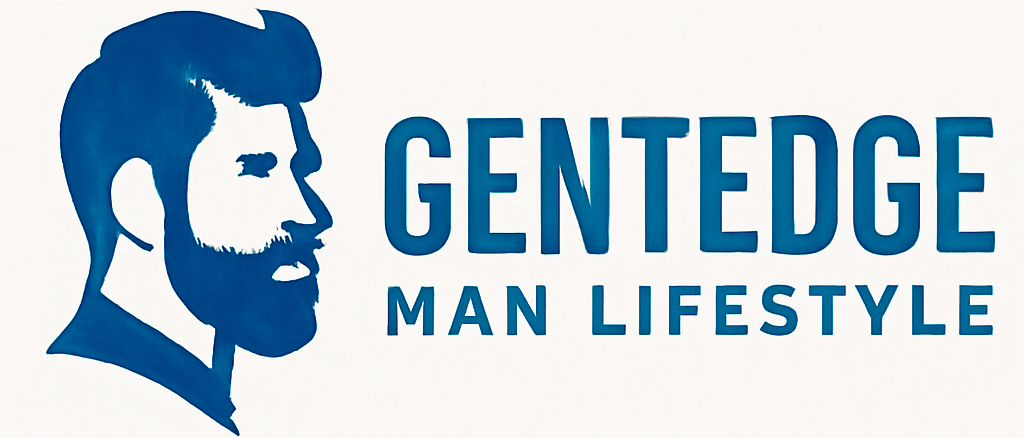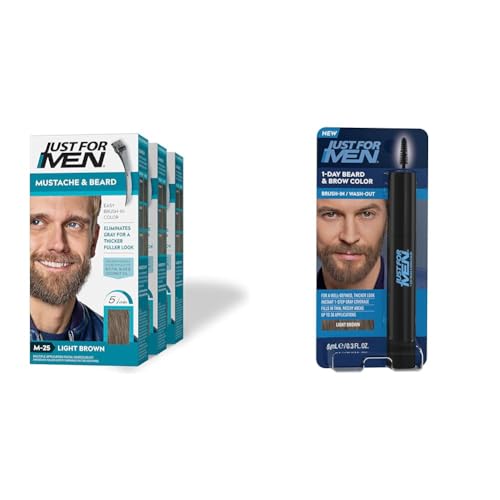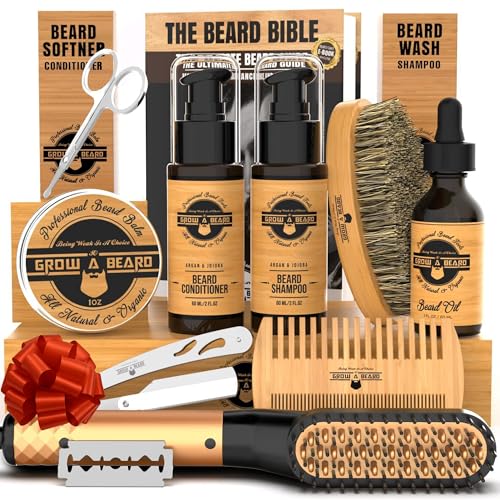We’ve all been there – wanting the perfect balance between clean-shaven sophistication and rugged masculinity. Light beard styles offer exactly that sweet spot, giving you a polished look that’s effortlessly stylish without the commitment of a full beard.
Whether you’re starting your beard journey or prefer minimal facial hair, light beard styles work for virtually every face shape and lifestyle. From the classic 5 o’clock shadow to perfectly trimmed stubble, these versatile looks enhance your natural features while keeping maintenance simple and professional.
The best part? You don’t need expensive tools or hours of grooming to achieve these sought-after styles. We’ll show you exactly how to master the art of light facial hair that looks intentional, not accidental.
Understanding Light Beard Styles and Their Benefits
Light beard styles represent the perfect middle ground between clean shaven faces and full beards. We’ll explore how these versatile looks can transform your appearance while maintaining professional standards.
What Defines a Light Beard Style
Length specifications separate light beards from their fuller counterparts. We typically see facial hair measuring between 1mm to 10mm in length across these styles. Stubble variations like the 5 o’clock shadow fall at 1-3mm while designer stubble reaches 3-5mm. Trimmed light beards extend from 5-10mm depending on your desired coverage.
Coverage patterns vary significantly among light beard options. Some men prefer uniform length across the entire face while others create gradient effects. Popular approaches include maintaining shorter growth on the cheeks with slightly longer hair on the chin. Strategic trimming around the neckline and cheek borders creates clean definition without extensive maintenance.
Texture considerations play a crucial role in achieving the right look. Coarse hair types often appear fuller at shorter lengths while fine hair may require slightly more length for visible coverage. We recommend working with your natural growth patterns rather than fighting them for the most flattering results.
Why Light Beards Are Perfect for Professional Settings
Corporate acceptance remains high for well maintained light facial hair. Most workplace dress codes permit stubble and short beards as long as they appear groomed and intentional. Conservative industries like banking and law increasingly embrace these styles when executed properly.
Client interaction benefits make light beards particularly valuable for customer facing roles. Studies show that light facial hair creates perceptions of trustworthiness while maintaining approachability. Sales professionals and consultants often find these styles help establish credibility without appearing intimidating.
Versatility across dress codes allows seamless transitions between casual and formal settings. Your light beard works equally well with business suits and weekend attire. This adaptability eliminates the need for dramatic grooming changes when switching between professional and personal environments.
Time efficiency becomes a major advantage during busy workdays. Most light beard styles require only 2-3 minutes of daily maintenance compared to 10-15 minutes for full beards. Quick touch ups with a quality trimmer keep you looking sharp without disrupting morning routines.
Maintenance Advantages of Shorter Facial Hair
Daily grooming requirements stay minimal with light beard styles. We recommend trimming every 2-3 days to maintain consistent length and shape. Basic tools like a quality electric trimmer with adjustable guards handle most maintenance tasks efficiently.
Product needs remain surprisingly simple for shorter facial hair. Basic beard oil applied 2-3 times weekly keeps skin moisturized and hair healthy. Specialized shampoos and conditioners become unnecessary at these shorter lengths.
Skin health benefits improve dramatically with proper light beard maintenance. Regular trimming prevents ingrown hairs that commonly occur with longer growth. The shorter length allows easier access for cleaning and exfoliation of underlying skin.
Cost effectiveness makes light beards attractive for budget conscious men. Professional barber visits can stretch to monthly intervals rather than weekly appointments. Home maintenance tools pay for themselves quickly compared to frequent salon services.
Seasonal adaptability provides comfort advantages throughout the year. Light facial hair offers some protection from cold weather without causing overheating in summer months. This balance eliminates the need for seasonal grooming changes that longer beards often require.
The Classic 5 O’Clock Shadow

We recognize the 5 o’clock shadow as the most iconic light beard style, featuring stubble around 0.4 mm in length that creates a barely-there appearance. This timeless look adds subtle definition to your jawline while maintaining professional polish.
Achieving the Perfect Stubble Length
Maintaining consistent 0.4 mm stubble requires daily attention with an adjustable trimmer set to the shortest guard setting. We recommend allowing one to two days of natural growth before your first trim to establish the baseline length. Darker facial hair will show this style more prominently than lighter hair colors, so adjust your trimming frequency accordingly.
Even coverage across your face becomes crucial for achieving that intentional stubble look rather than appearing unkempt. Electric trimmers with precision guards work best for maintaining this short length consistently. Daily exfoliation helps prevent ingrown hairs that can disrupt the uniform appearance of your stubble.
Best Face Shapes for This Timeless Look
Square faces benefit most from the 5 o’clock shadow because it enhances already strong jawlines and defined chins. We find this style particularly flattering for men with naturally angular facial features. Most face shapes can successfully wear this versatile look due to its minimal coverage and clean appearance.
Round faces might need slightly more length to add structural definition, making this ultra-short style less ideal. Diamond shaped faces can appear overly angular with such short stubble, as the minimal hair doesn’t soften sharp cheekbones. Oval faces work well with this style since they can handle the subtle enhancement without overwhelming their balanced proportions.
Daily Maintenance Tips
Trimming every morning with your electric razor ensures consistent length throughout the week. We suggest using beard oil sparingly to keep both skin and stubble healthy even though the short length. Moisturizing becomes essential since short stubble can irritate sensitive skin if not properly cared for.
Pairing your 5 o’clock shadow with a fresh haircut creates a polished overall appearance that works in professional settings. Regular blade replacement on your trimmer maintains clean cuts that prevent tugging or uneven results. Weekly deep cleaning of your trimmer guards removes buildup that can affect performance and hygiene.
The Well-Groomed Goatee

Moving beyond stubble styles, the goatee represents one of the most sophisticated light beard options available to modern men. This timeless style concentrates facial hair on the chin area while keeping cheeks clean shaven, creating an intellectual and refined appearance that’s suited men since Ancient Greece.
Trimming Techniques for Clean Lines
Start by mapping your goatee boundaries using a quality beard trimmer with precision guards. We recommend defining the shape first by shaving away all hair on the cheeks, jaw areas, and sections of the chin that fall outside your desired goatee outline.
Trim the remaining goatee hair to your preferred length using consistent guard settings to maintain uniformity. Most well groomed goatees work best at 3mm to 8mm lengths, depending on your facial structure and personal preference.
Create sharp, defined edges around the perimeter of your goatee, paying special attention to the areas near your cheekbones and neckline. These clean lines are what separate a professional goatee from an unkempt patch of chin hair.
Use different length guards strategically to create natural transitions from the goatee area to the freshly shaved portions of your face. This tapering technique prevents harsh lines that can look artificial or poorly maintained.
Styling Variations to Consider
Circle beards combine a rounded goatee with a connecting mustache to form a continuous loop around the mouth area. This variation offers more coverage while maintaining the clean, polished aesthetic of traditional light beard styles.
Short boxed beards extend slightly beyond the basic goatee by covering portions of the jawline with clean, square edges. These compact styles provide more fullness than standard goatees while remaining professional and easy to maintain.
Faded goatees incorporate gradual length transitions from the sideburn area down to the chin, keeping the bulk concentrated on the chin while creating sleek, tapered sides. This contemporary approach works particularly well for men with medium length facial hair preferences.
Extended goatees stretch the traditional chin focus slightly wider to include more jaw coverage without extending to full cheek hair. This variation suits men who want more presence than a basic goatee but less maintenance than fuller beard styles.
Common Mistakes to Avoid
Neglecting regular trimming sessions leads to scruffy, uneven growth that undermines the refined appearance essential to successful goatee styling. We suggest weekly maintenance to keep your goatee looking intentionally groomed rather than accidentally patchy.
Allowing beard edges to become unruly destroys the clean lines that define a well executed goatee. Sharp, consistent borders are non negotiable for this style to maintain its sophisticated appeal.
Overextending the goatee boundaries onto the cheeks or too far along the jawline dilutes the defining characteristics that make this style distinct. Keep the hair concentrated on the chin area to preserve the goatee’s classic proportions.
Ignoring face shape considerations can create unflattering results, particularly for men with broader faces who may develop a “chipmunk effect” if the goatee becomes too full. Square face shapes benefit most from goatee styles, while round faces may need slight adjustments to achieve optimal proportions.
The Refined Mustache and Soul Patch Combination

We’ve covered versatile goatee styles, but there’s another sophisticated light beard option that commands attention through its distinctive pairing of elements. The refined mustache and soul patch combination creates a balanced, understated facial hair look that works exceptionally well for men seeking a unique light beard style.
Balancing Proportions for Your Face
Square faces benefit tremendously from this combination since the soul patch emphasizes the chin area while the mustache softens strong jawlines. The chevron mustache style works particularly well here, as its thick coverage across the upper lip projects authority and classic masculinity without overwhelming angular features.
Oval faces can carry this style with remarkable versatility, allowing for slight variations in mustache thickness and soul patch size. We recommend keeping the soul patch small and positioned just below the lower lip to maintain the face’s natural proportions.
Round faces should consider a slightly wider chevron mustache to create horizontal lines that elongate the face’s appearance. The soul patch adds vertical definition, helping to balance fuller cheek areas naturally.
Diamond shaped faces work well with this combination when the mustache remains fuller, as it adds width to the narrower chin area. The soul patch provides additional emphasis to the lower face without competing with prominent cheekbones.
Precision Trimming Methods
Mustache maintenance requires regular trimming to keep edges neat and defined, particularly with the chevron style that covers the upper lip fully. Use mustache scissors for detail work around the lip area, ensuring the hair doesn’t extend beyond the mouth corners.
Soul patch shaping demands careful attention to create clean boundaries around this small tuft of hair. Define the patch’s edges using a precision trimmer without a guard, maintaining a rounded or square shape that complements your lip width.
Length consistency becomes crucial when balancing both elements together. Keep the mustache length at approximately 4-6mm while maintaining the soul patch at 2-4mm for optimal proportion and visual harmony.
Weekly touch ups help preserve the style’s refined appearance, focusing on stray hairs that grow outside the defined boundaries. Clean the areas between the mustache and soul patch completely to maintain the intentional separation that defines this look.
Professional Styling Tips
Quality grooming tools make all the difference in achieving this precise style, including a precision trimmer, mustache scissors, and small comb for detailed work. Invest in mustache wax for control, particularly when styling the chevron mustache into its characteristic shape.
Moisturizing and conditioning the facial hair keeps both the mustache and soul patch soft while preventing skin irritation underneath. Apply beard oil sparingly to add shine and manageability without making the hair appear greasy.
Styling products like beard balm can help define the mustache shape and keep the soul patch neat throughout the day. Use minimal amounts to avoid weighing down the lighter facial hair common in this style.
Professional consultation proves invaluable for initial shaping, especially when determining the ideal mustache width and soul patch size for your exact face shape. A skilled barber can establish the proper proportions that you’ll maintain at home.
Daily routine should include a quick brush through the mustache and gentle shaping of the soul patch to maintain the polished appearance this style demands. Check for symmetry in your bathroom mirror each morning to ensure both elements remain balanced and intentional looking.
The Light Full Beard

We’ve covered precise styles like goatees and mustache combinations, but many men prefer broader coverage with the light full beard. This approach provides facial hair across your entire jawline and cheeks while maintaining that intentional, polished appearance we’ve been exploring.
Keeping Density Low While Maintaining Coverage
Strategic trimming with the right guard lengths creates the perfect balance between coverage and lightness. We recommend using a number 3 or 4 guard clipper on your chin area while applying a slightly shorter guard on your cheeks to achieve a subtle tapered effect.
Regular maintenance prevents your beard from becoming too thick or bulky over time. The key lies in preserving hair in strategic areas like your jawline while keeping cheek coverage minimal enough to maintain that light aesthetic.
Consistent trimming schedules ensure your beard never crosses into heavy territory. We find that checking your density every few days helps maintain that sweet spot between full coverage and understated presence.
Blending Techniques for Natural Appearance
Seamless tapering from your chin’s thicker areas into lighter cheek coverage eliminates harsh lines that can make light beards look artificial. Multiple clipper guards create this gradient effect by gradually reducing length as you move from your jawline toward your cheekbones.
Clean edging lines near your cheekbones and neckline keep your light full beard looking intentional rather than neglected. Sharp boundaries between your beard and clean-shaven areas provide the definition that separates styled facial hair from simple stubble.
Daily beard oil application softens and smooths your facial hair while improving that natural blended appearance. We’ve found that well-conditioned hair lies flatter against your face, creating smoother transitions between different density areas.
Weekly Grooming Schedule
Monday: Trim your entire beard to maintain consistent density, focusing on tapering from chin to cheeks using appropriate guard lengths.
Wednesday: Define your edges by shaving clean lines along your cheekbones and neckline for sharp boundaries.
Friday: Address any uneven patches or trouble spots with targeted trimming to maintain uniformity.
Daily tasks include applying beard oil to keep hair soft and skin moisturized while preventing patchiness. Brushing your beard trains hairs to lie flat and promotes even growth patterns throughout the week.
Weekly deep conditioning with beard balm provides extra nourishment for both your facial hair and underlying skin. We recommend spot checking your beard’s shape every few days to catch any areas that need attention before your next full grooming session.
The Modern Chinstrap Beard

The chinstrap beard represents a sophisticated departure from traditional full coverage styles, offering a thin line of facial hair that traces your jawline from sideburn to sideburn. This distinctive look excludes the mustache entirely, creating a clean frame that emphasizes your jaw’s natural contours while maintaining the refined aesthetic that light beard enthusiasts seek.
Creating Clean Jawline Definition
Achieving sharp jawline definition starts with understanding how the chinstrap works with your facial structure. The style follows your natural jawline closely, creating visual emphasis that enhances square, oval, and round face shapes by adding structured definition where it matters most.
We recommend mapping your jawline before trimming to ensure consistent placement. The chinstrap’s power lies in its ability to create the illusion of a stronger jaw through strategic hair placement along the bone structure. This technique works particularly well for men with softer jawlines who want to add masculine definition without committing to fuller beard styles.
Celebrity examples like Lewis Hamilton and Stormzy demonstrate how this style can complement various face shapes while maintaining a modern edge. Their success with the chinstrap shows its versatility across different personal styles and professional settings.
Tools Needed for Precise Edges
Quality trimming equipment becomes essential when creating the sharp lines that define a successful chinstrap. An adjustable trimmer with multiple guard settings allows you to maintain consistent length throughout the beard line while achieving the precision this style demands.
Detail trimmers serve as your primary tool for edge work, creating those clean boundaries between hair and skin that make the chinstrap so striking. We suggest investing in a high quality razor specifically for outline work, as it provides the control needed for maintaining crisp edges around the cheeks and neck areas.
Beard combs help keep hair aligned during trimming sessions, ensuring even coverage and preventing uneven patches. Regular cleaning and maintenance of these tools extends their lifespan while guaranteeing consistent results with each grooming session.
Maintaining Consistent Width
Width consistency separates amateur chinstrap attempts from professional looking results. The ideal chinstrap measures between 1 to 2 cm wide, creating a sleek appearance that complements rather than overwhelms your facial features.
Regular trimming prevents uneven growth patterns that can make your chinstrap appear patchy or unkempt. We recommend weekly maintenance sessions to keep the width uniform and address any areas where hair grows faster than others. This consistent approach ensures your chinstrap maintains its clean, structured appearance.
Men with patchy growth patterns can adapt the style by keeping less dense areas trimmed clean while shaping fuller sections into the characteristic strap shape. This modification preserves the chinstrap’s essential aesthetic while working with your natural hair growth patterns rather than against them.
The Subtle Van Dyke Style

The Van Dyke offers a sophisticated twist on traditional light beard styles by combining a mustache with a separate pointed goatee. This distinguished look emphasizes precise separation between facial hair elements while maintaining the clean, manageable appeal of lighter beard coverage.
Separating Mustache from Chin Hair
Creating a clear gap between your mustache and chin hair defines the Van Dyke’s signature aesthetic. We recommend using a quality beard trimmer to carefully shave the skin connecting these two areas, establishing a visible separation that highlights each component. Regular maintenance becomes essential since even small amounts of hair growth can blur the distinct lines that make this style so striking. The key lies in patience during trimming sessions, taking time to ensure the division remains clean and symmetrical on both sides of your face.
Achieving Symmetrical Results
Symmetry transforms a good Van Dyke into an exceptional one that commands attention for all the right reasons. We suggest using a well lit mirror and checking both sides frequently during your grooming routine to maintain balanced proportions. Trimming tools should be used methodically, with careful attention to matching the shape and length of both the mustache and goatee components. Professional grooming becomes easier when you outline the edges first, then gradually refine the length to ensure both sides mirror each other perfectly. Some men find beard shaping tools helpful for maintaining consistent boundaries and achieving that polished, intentional appearance.
Style Variations for Different Occasions
Adapting your Van Dyke for various settings maximizes its versatility across different aspects of your lifestyle. Casual everyday wear benefits from shorter, more natural looking proportions with slightly softer edges that appear effortless yet intentional. Professional environments call for sharper lines and perfectly groomed mustache and goatee elements that convey attention to detail and personal care standards. Creative or trendy adaptations allow for experimentation with slight variations in goatee curvature or mustache length to express individual personality while maintaining the style’s sophisticated foundation.
| Occasion | Mustache Length | Goatee Style | Edge Definition |
|---|---|---|---|
| Casual | 2-4mm | Natural taper | Soft blend |
| Professional | 3-5mm | Sharp point | Precise lines |
| Creative | 4-6mm | Custom curve | Artistic edges |
Essential Tools for Maintaining Light Beard Styles

Success with light beard styles depends heavily on having the right tools at your disposal. We’ll explore the essential equipment that makes the difference between an amateur attempt and a professionally groomed appearance.
Electric Trimmers vs. Manual Razors
Electric trimmers serve as the backbone of light beard maintenance, offering versatility that manual tools simply can’t match. We recommend investing in a quality trimmer with multiple guard sizes, as this allows you to create the uniform lengths essential for styles like the circle beard and short boxed beard. Tapering becomes effortless when you can transition from a #4 guard on the chin to a #2 on the sideburns, creating that professional faded effect.
Manual razors excel where precision matters most, particularly when defining clean edges around your beard perimeter. We find them indispensable for maintaining sharp lines on the cheeks and neckline, especially crucial for styles like the short boxed beard where geometric precision defines the look. Clean shaving areas outside your beard boundaries requires the sharp, controlled cuts that only a quality manual razor can provide.
Both tools complement each other perfectly in your grooming routine. Electric trimmers handle the bulk of length maintenance and shaping, while manual razors deliver the crisp finishing touches that elevate your style from good to exceptional.
Quality Scissors for Detail Work
Scissors provide the precision control that neither trimmers nor razors can achieve when working with individual hairs. We use them primarily for trimming stray hairs that escape the uniformity of electric trimming, particularly around the mustache area where precision matters most. Small adjustments to beard edges become manageable with quality scissors, allowing you to fine tune your style without committing to major changes.
Detail work around the corners of your mouth and along your jawline benefits significantly from scissor precision. We’ve found that maintaining styles like the circle beard requires this level of detailed attention, as even a few misplaced hairs can disrupt the clean, continuous loop that defines the style. Mustache trimming particularly benefits from scissor work, as the delicate balance of length and shape requires careful, hair by hair attention.
Investing in professional grade scissors pays dividends in the long term. Sharp, well balanced scissors make detail work effortless and help maintain the polished appearance that distinguishes intentional light beard styles from accidental stubble.
Grooming Products That Make a Difference
Beard oil forms the foundation of effective light beard maintenance, keeping shorter hairs soft and manageable while preventing the itchiness that can disrupt your grooming routine. We apply it daily to maintain the health and appearance of our facial hair, as dry, brittle hairs make achieving clean lines and uniform coverage nearly impossible. The hydration provided by quality beard oil also promotes healthy growth, essential for maintaining the density needed in light beard styles.
Beard balm offers styling control that oil alone cannot provide, helping hold lighter beards in their intended shape without adding excessive weight. We find it particularly useful for styles requiring precise shaping, such as the goatee or Van Dyke, where individual hairs need to stay in position throughout the day. The light hold provided by beard balm maintains your style’s integrity while allowing natural movement.
Specialized grooming products enhance your maintenance routine significantly. Beard wash and conditioner maintain cleanliness and softness, creating the ideal foundation for styling. Precision trimmer attachments enable detailed shaping around your cheekbones and jawline, maintaining the sharpness that defines professional light beard styles. We recommend investing in products specifically formulated for facial hair rather than using general hair care products, as the unique texture and growth patterns of beard hair require specialized formulations.
Common Grooming Mistakes to Avoid

Even with proper tools and products, light beard styles can quickly lose their polished appearance when common grooming mistakes creep into your routine. We’ll explore the three most damaging errors that can undermine your light beard’s sophisticated look.
Over-Trimming Problems
Over-trimming destroys the careful balance that makes light beard styles so appealing. Many men make the mistake of cutting too much length during maintenance sessions, leaving patchy areas that take weeks to recover. We’ve observed that using dull trimmer blades creates uneven cuts that force additional trimming attempts, leading to a destructive cycle of over-correction.
Excessive volume removal from the cheeks and jawline eliminates the subtle definition that light beards provide. Sharp trimming tools prevent the ragged cuts that tempt you to keep trimming for evenness. Professional barbers recommend taking off no more than 2mm of length during any single maintenance session to preserve your beard’s fullness.
Precision matters when maintaining defined lines along the neck and cheek boundaries. Over-trimming these crucial areas creates harsh, unnatural edges that detract from the refined appearance of styles like the circle beard or short-boxed beard. We suggest marking your desired trim lines with a washable pencil before making any cuts to avoid removing too much hair.
Neglecting Regular Maintenance
Irregular maintenance transforms polished light beard styles into unkempt, patchy facial hair within days. Light beards require consistent attention every 2-3 days to maintain their sharp appearance, as even minimal growth can disrupt carefully crafted lines. We find that men who skip regular trimming sessions often end up with uneven growth patterns that require professional correction.
Patchiness develops when maintenance schedules become inconsistent, particularly in areas with naturally slower hair growth like the cheeks and mustache connection points. Daily beard oil application keeps shorter hairs manageable and prevents the dry, brittle texture that makes trimming more difficult. Regular maintenance also includes cleaning the neckline and cheek boundaries to preserve the intentional shape of your chosen style.
Professional appearance depends on maintaining uniform length across all areas of your light beard. We recommend establishing a weekly grooming schedule that includes deep conditioning treatments and precision trimming to prevent the accumulation of maintenance issues. Consistent care prevents the need for dramatic corrections that can temporarily ruin your beard’s appearance.
Choosing the Wrong Style for Your Face Shape
Face shape compatibility determines whether a light beard style enhances or detracts from your natural features. Men with round faces should avoid styles that add bulk to the cheeks, such as full coverage light beards, as these can make the face appear rounder and less defined. We’ve seen how the wrong style choice can overwhelm facial proportions even though perfect grooming technique.
Square and diamond-shaped faces benefit most from rounded beard styles that follow natural facial contours rather than angular styles like the boxed beard. Oval and oblong faces can accommodate most light beard styles, but should avoid excessive length on the chin that creates unflattering vertical emphasis. Professional consultation helps identify which styles complement your exact facial structure and bone prominence.
Style adaptation becomes necessary when your chosen light beard doesn’t flatter your face shape after several weeks of proper maintenance. We recommend photographing your beard from multiple angles to objectively assess how different styles affect your facial proportions. Remember that subtle adjustments to coverage patterns and trimming angles can transform an unflattering style into one that enhances your natural features.
Conclusion
Light beard styles offer the perfect solution for men seeking sophistication without the commitment of full facial hair. These versatile looks work across professional and casual settings while requiring minimal maintenance time and investment.
Success with light beards comes down to choosing the right style for your face shape and maintaining consistent grooming habits. Whether you opt for a classic 5 o’clock shadow or a refined Van Dyke the key lies in precise trimming and regular upkeep.
We’ve shown you that achieving polished facial hair doesn’t require expensive tools or hours of daily maintenance. With the right approach these styles can enhance your natural features while fitting seamlessly into your lifestyle and professional requirements.
Frequently Asked Questions
What are light beard styles and what length do they typically have?
Light beard styles are minimal facial hair options that strike a balance between clean-shaven and full beards. They typically range from 1mm to 10mm in length, offering versatile coverage patterns and textures. These styles include the 5 o’clock shadow, trimmed stubble, goatees, and light chinstraps, making them perfect for men who want subtle masculinity without extensive grooming.
How long does it take to maintain light beard styles?
Light beard styles are extremely time-efficient to maintain, requiring only 5-10 minutes of daily grooming. Unlike full beards that need extensive styling and conditioning, light beards simply need quick trimming every few days and basic oil application. This minimal maintenance makes them ideal for busy professionals and men with active lifestyles.
What tools do I need for light beard maintenance?
Essential tools include an adjustable electric trimmer for bulk maintenance, a manual razor for precision edging, and quality scissors for detail work around the mustache and jawline. Additionally, invest in beard oil to keep hair soft and manageable, plus beard wash for cleanliness. These basic tools are sufficient for maintaining most light beard styles effectively.
Are light beard styles appropriate for professional settings?
Yes, light beard styles are widely accepted in professional environments. They convey trustworthiness and approachability while maintaining a polished appearance. Styles like the 5 o’clock shadow and well-trimmed goatees work excellently in client-facing roles and formal business settings, offering versatility across different dress codes from casual to corporate.
Which face shapes work best with light beard styles?
Light beard styles are versatile and suit most face shapes. Square faces benefit most from 5 o’clock shadows, while round and diamond-shaped faces may need slightly longer stubble for better definition. Goatees work well for oval and square faces, while chinstraps enhance jawlines for various face shapes. Professional consultation can help identify the most flattering style.
What’s the difference between a 5 o’clock shadow and regular stubble?
A 5 o’clock shadow is specifically around 0.4mm in length, creating subtle jawline definition while maintaining professional polish. Regular stubble can vary in length from 1-5mm and offers more texture and coverage. The 5 o’clock shadow requires daily trimming for consistency, while longer stubble can be maintained every 2-3 days depending on growth rate.
How do I avoid common mistakes when styling light beards?
Avoid over-trimming, which creates patchy areas and uneven cuts. Don’t neglect regular maintenance, as even light beards can look unkempt quickly. Choose styles that complement your face shape rather than following trends blindly. Use proper tools and techniques, maintain clean edges, and consider photographing your beard from multiple angles to assess your appearance objectively.
Can I achieve light beard styles without expensive grooming tools?
Absolutely! Light beard styles don’t require expensive equipment. A basic adjustable trimmer, standard razor, and small scissors are sufficient for most styles. Quality beard oil is recommended but affordable options work well. The key is consistency in maintenance rather than expensive tools, making light beards a cost-effective grooming choice for budget-conscious men.

























